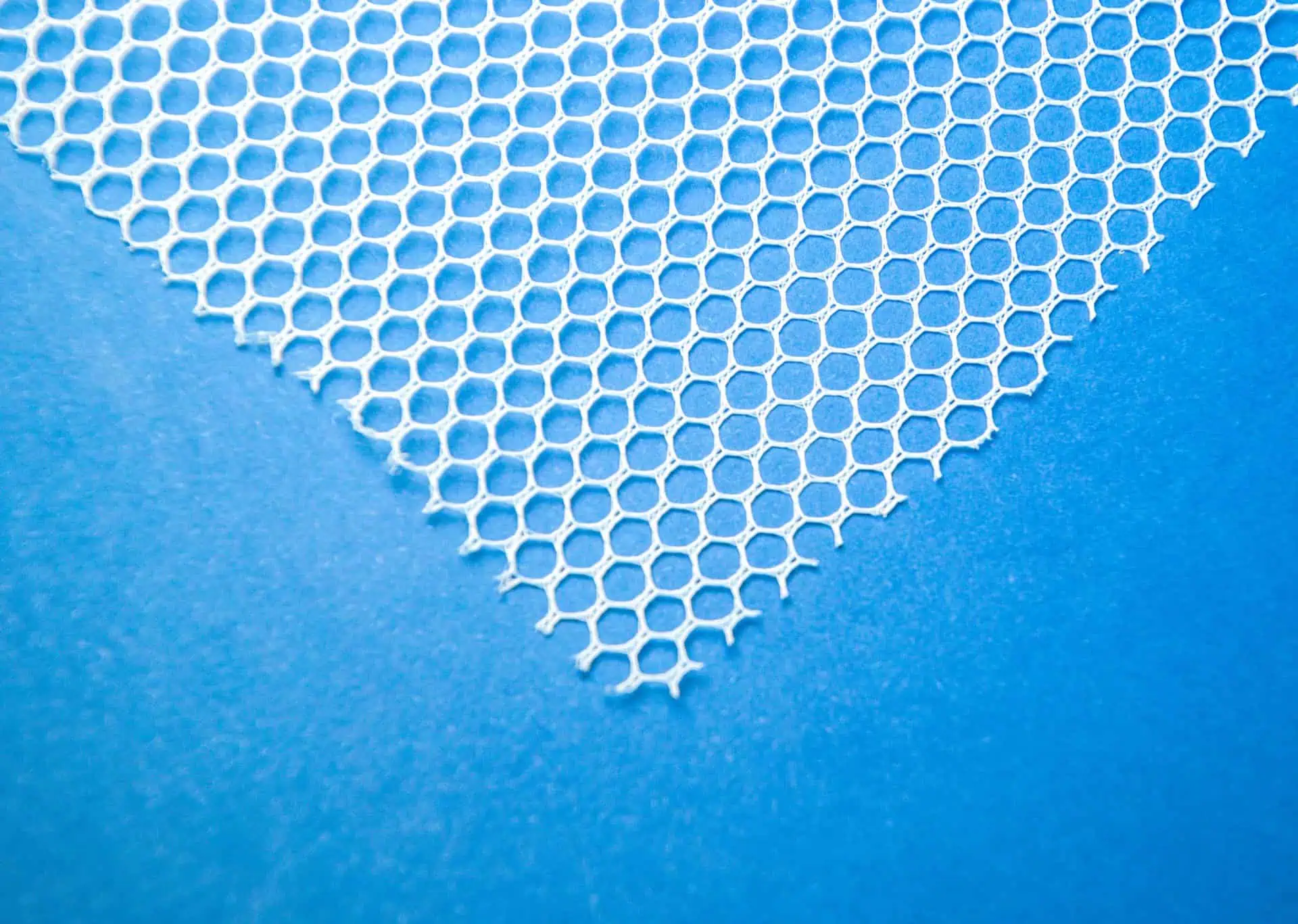Why Is Vaginal Mesh Surgery Controversial?
- Last Updated: July 14th, 2025

Attorney Jessica Paluch-Hoerman, founder of TruLaw, has over 28 years of experience as a personal injury and mass tort attorney, and previously worked as an international tax attorney at Deloitte. Jessie collaborates with attorneys nationwide — enabling her to share reliable, up-to-date legal information with our readers.
Legally Reviewed
This article has been written and reviewed for legal accuracy and clarity by the team of writers and legal experts at TruLaw and is as accurate as possible. This content should not be taken as legal advice from an attorney. If you would like to learn more about our owner and experienced injury lawyer, Jessie Paluch, you can do so here.
Fact-Checked
TruLaw does everything possible to make sure the information in this article is up to date and accurate. If you need specific legal advice about your case, contact us by using the chat on the bottom of this page. This article should not be taken as advice from an attorney.
Key takeaways:
- Vaginal mesh surgery, originally used to treat pelvic organ prolapse and stress urinary incontinence, became controversial due to severe complications including mesh erosion, pain, infection, and organ perforation, leading the FDA to ban transvaginal mesh for POP repair in 2019.
- Patients who experienced complications from vaginal mesh can pursue legal action with potential settlements ranging from $40,000 to $450,000, though statutes of limitations vary by state and typically begin when complications are discovered.
- Treatment options for mesh complications include observation, physical therapy, medications, and surgical removal, though complete removal isn't always possible, and approximately one-third of patients continue experiencing pain even after removal procedures.
Why Is Vaginal Mesh Surgery Controversial?
Question: Why is vaginal mesh surgery controversial?
Answer: Transvaginal mesh surgery has become controversial due to complications reported in some cases following the surgical procedure.
Originally introduced to treat pelvic organ prolapse (POP) and stress urinary incontinence (SUI), transvaginal mesh was seen as a promising solution for weakened pelvic muscles and tissues.
On this page, we’ll discuss this question in further depth, legal rights for women harmed by vaginal mesh, steps to take if you’ve had vaginal mesh complications, and much more.
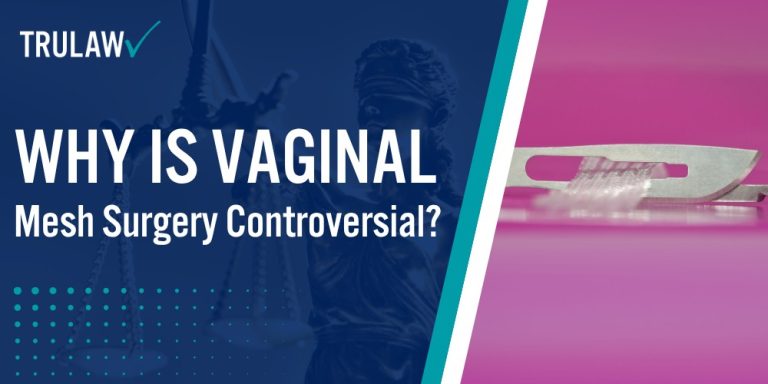
What Is Vaginal Mesh Surgery and How Does It Work?
Vaginal mesh surgery involves permanently implanting synthetic or biological mesh material to reinforce weakened or damaged tissue in the pelvic floor.
POP occurs when the muscles and tissue of the pelvic floor become stretched, torn, or weakened, and can no longer support pelvic organs such as the bladder, bowel, or uterus.
As a result, the organs drop from their normal position and bulge (prolapse) into the vagina.
Some patients have experienced severe side effects, leading to numerous lawsuits against manufacturers.
Legal experts argue that companies misrepresented the risks and benefits of vaginal mesh, downplaying potential complications while exaggerating its effectiveness.
The controversy has been further fueled by reports of surgeons implanting mesh products without adequate training in vaginal surgery techniques.
When surgeons perform these medical procedures, they place mesh through incisions in the vaginal wall to create a supportive hammock beneath the organs.
It is permanently implanted to reinforce the weakened vaginal wall for POP repair or support the urethra or bladder neck for the repair of SUI.
The mesh becomes integrated into surrounding tissues as the body heals.
If you or a loved one has suffered after receiving a transvaginal mesh implant, you may be eligible to seek compensation.
Contact TruLaw using the chat on this page to receive an instant case evaluation that can determine if you qualify for the Transvaginal Mesh Lawsuit today.
Table of Contents
Types of Vaginal Mesh Procedures
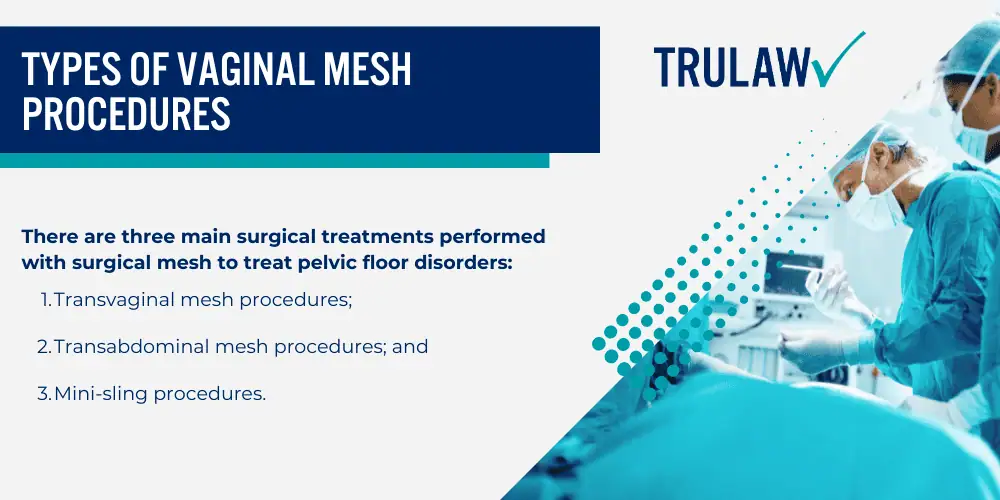
There are three main surgical treatments performed with surgical mesh to treat pelvic floor disorders:
- Transvaginal mesh procedures;
- Transabdominal mesh procedures; and
- Mini-sling procedures.
Transvaginal mesh procedures involve placing mesh through vaginal incisions to treat anterior or posterior wall prolapse.
Transabdominal procedures access the pelvic area through abdominal incisions for apical prolapse repair.
Mini-sling procedures specifically address stress urinary incontinence using smaller mesh strips placed beneath the urethra.
Most surgical mesh made of synthetic materials can be found in knitted mesh or non-knitted sheet forms.
Each procedure type targets different pelvic floor conditions.
Transvaginal approaches primarily treat cystocele (bladder prolapse) and rectocele (rectal prolapse), while transabdominal methods address uterine or vaginal vault prolapse.
Most patients with pelvic organ prolapse are asymptomatic.
Prolapse symptoms become more bothersome as the bulge protrudes past the vaginal opening.
Materials Used in Vaginal Mesh Implants
The synthetic materials used can be either absorbable, non-absorbable, or a combination of absorbable and non-absorbable materials.
Most vaginal mesh products use polypropylene, a permanent synthetic plastic material that remains in the body indefinitely.
Some manufacturers also produce mesh from biological materials derived from animal tissues.
Surgeons have used surgical mesh since the 1950s to repair abdominal hernias; in the 1970s, gynecologists specializing in female pelvic medicine began implanting surgical mesh for the abdominal repair of POP and, in the 1990s, for the transvaginal repair of POP.
Major manufacturers historically included Boston Scientific, Coloplast, and Ethicon, producing products like Uphold Lite, Xenform, and ProteGen.
On April 16, 2019, after reviewing their premarket approval (PMA) applications, the FDA ordered all manufacturers of surgical mesh intended for transvaginal repair of pelvic organ prolapse (Boston Scientific Uphold Lite, Boston Scientific Xenform, and Coloplast Direct Fix Anterior) to stop selling and distributing their products immediately.
Major Complications and Side Effects of Vaginal Mesh
The FDA has received thousands of reports of complications involving the use of mesh for transvaginal POP repair.

These complications have profoundly impacted women’s lives, with the FDA reporting that it had received 2,874 reports of injury, death, malfunctions, and other transvaginal mesh-related complications from Jan.1, 2008, to Dec. 31, 2010.
Common Physical Complications
The most common problems reported include severe pelvic pain, pain during intercourse, infection, bleeding, organ perforation, and urinary problems from mesh eroding into surrounding tissues.
Research shows 9.8% of patients undergoing surgical mesh insertion for SUI experienced a complication peri-procedurally, within 30 days or within 5 years of the initial mesh insertion procedure.
Mesh exposure represents the most frequent complication.
This occurs when the mesh moves or erodes through the vaginal wall, sometimes extending into nearby organs like the bladder or rectum.
Women experiencing erosion report pain, bleeding, infections, painful intercourse, or the exposed mesh becoming visible or felt inside the vagina.
One study reported a 32% corrective rate for SUI surgery involving a midurethral sling procedure, while others found the rate of mesh-related complications to be approximately 15% to 25%.
Bacterial colonization may contribute to additional complications, as 44 samples (90%) were culture positive, with a higher diversity of species and more Gram-negative bacteria and polymicrobial cultures in the MRC cohort than the reference cohort.
Impact on Daily Life and Relationships
Most participants experienced negative emotions as a result of mesh complications and subsequent continuous pain.
These ranged from feeling robbed, trapped, regretful, anxious, and suicidal.
The psychological toll extends beyond physical symptoms, with women’s lives having been irreversibly altered for the worse owing to mesh complications, causing chronic pain and impacting their quality of life.
Sexual dysfunction proves particularly distressing.
Physical pain includes pain during sexual intercourse (dyspareunia).
Physical limitations can also affect basic activities that prevent women from sitting comfortably, exercising, or performing routine tasks.
Revision Surgery Challenges
Complete transvaginal mesh removal is possible for some women, while only part of the mesh can be removed in other women due to issues from the type of mesh that was originally used.
The difficulty increases over time as tissue grows around and embeds the mesh.
Revision surgery removes or repairs transvaginal mesh implants, but it’s a difficult procedure and may cause pain compared to the initial mesh procedure.
Studies indicate 1 in every 30 women may need a repeat surgery to remove or revise the mesh, up to 10 years after the initial operation.
Patients were also excluded if they were unable to provide informed consent, were undergoing chronic immunosuppressive therapy, or had an autoimmune disorder.
Multiple revision surgeries often become necessary, with over 50% of women who experienced erosion with non-absorbable synthetic mesh needing to have the mesh surgically removed.
Some patients required two or more operations after the mesh was removed.
Why Did the FDA Issue Warnings About Vaginal Mesh?
The FDA’s escalating safety actions regarding vaginal mesh stemmed from an alarming pattern of adverse events.
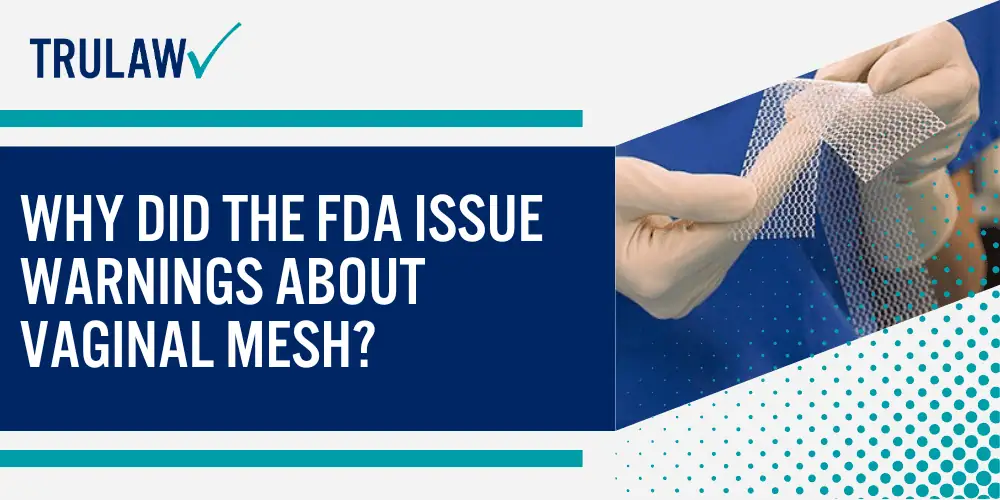
Issued safety communications in 2008 and 2011 that warned doctors and consumers about an increase in adverse event reports related to mesh used for urogynecological procedures.
Timeline of FDA Safety Communications
The regulatory journey began with growing concerns about complications associated with mesh.
In 2008, the FDA issued its first public health notification regarding transvaginal mesh, following receipt of over 1,000 adverse event reports from nine surgical manufacturers since 2005.
Initially, the safety communication described complications from transvaginal mesh as rare.
The situation escalated dramatically when, from January 2008 to December 2010, the FDA received 2,874 additional reports of complications associated with surgical mesh devices used to repair pelvic organ prolapse (POP) and stress urinary incontinence (SUI), with 1,503 reports related to POP repairs and 1,371 associated with SUI repairs.
This prompted stronger action.
The FDA issued an update on July 13, 2011, noting complications associated with surgical mesh for transvaginal repair of POP are not rare and that it is not clear that transvaginal POP repair with mesh is more effective than traditional non-mesh repair, and it may expose patients to greater risk.
In 2016, the FDA issued one order to reclassify these medical devices from class II, which generally includes moderate-risk devices, to class III, which generally includes high-risk devices.
Finally, July 2018 was the deadline for applications to be filed for premarket approval for any surgical mesh marketed for transvaginal pelvic organ prolapse (POP) repair.
Manufacturers that did not file PMAs by this deadline were required to withdraw their products from the market.
April 16, 2019: The FDA ruling ordered all manufacturers of surgical mesh intended for transvaginal repair of pelvic organ prolapse to stop selling and distributing their products immediately.
Clinical Evidence That Led to FDA Action
We analyzed 1,103 MDRs submitted to the MAUDE database from 2005 to 2007 for pelvic mesh adverse events.
The FDA’s analysis revealed concerning patterns.
The most frequent complications reported to the FDA include mesh erosion through the vagina, pain, infection, bleeding, dyspareunia, organ perforation, urinary problems, and voiding dysfunction.
Scientific scrutiny intensified when the panel recommended that to support a favorable benefit-risk profile, the effectiveness of surgical mesh for transvaginal repair of POP should be superior to native tissue repair at 36 months and the safety outcomes for surgical mesh for transvaginal repair of POP should be comparable to native tissue repair.
In reviewing the PMAs submitted by the two manufacturers, the agency determined they failed to provide an adequate assessment of the long-term safety of these devices and failed to demonstrate an acceptable long-term benefit of these devices compared to transvaginal surgical tissue repair without the use of mesh.
The evidence showed transvaginal mesh products for treating POP have been approved on the basis of weak evidence over the last 20 years.
The MAUDE database was limited in its ability to collect, quantify, and standardize real-life adverse events related to transvaginal mesh.
Despite these limitations, the accumulated evidence proved sufficient for regulatory action, as the FDA had not found conclusive evidence that using transvaginally placed mesh improves clinical outcomes any more than traditional non-mesh treatments, and it may expose patients to greater risk.
Legal Rights for Women Harmed by Vaginal Mesh
Women experiencing complications from vaginal mesh implants have legal recourse through product liability claims.
The main claims are that manufacturers produced faulty products and failed to warn the public of the health risks.
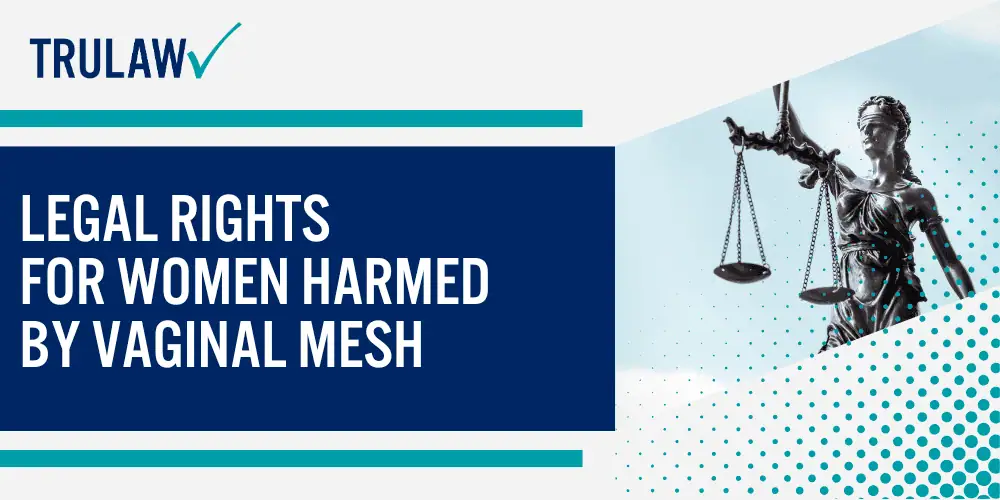
Since litigation began, over 100,000 Transvaginal Mesh Lawsuits have been filed across courts in the United States on behalf of women injured by vaginal mesh and pelvic mesh products.
Grounds for Vaginal Mesh Lawsuits
Transvaginal mesh lawsuits claim that several manufacturers of transvaginal mesh knew that their products were defective and could cause complications such as erosion, organ perforation, severe pain, painful sex, mesh migration and other serious issues that require surgical management to remove the mesh.
Legal theories supporting these claims include design defects, manufacturing defects, failure to warn, and negligent marketing practices.
Following Food and Drug Administration communications about the safety of transvaginal prolapse, more than 73,000 patients with complications from the treatment of pelvic organ prolapse (POP) or stress urinary incontinence (SUI) have filed product liability claims.
Courts have recognized that a recent study conducted by researchers at the University of Sheffield in England reveals that most vaginal and pelvic mesh implants may have been fundamentally flawed in their design and manufacturing.
Successfully resolved cases demonstrate viable legal grounds.
Around 140 women in England who suffered severe side effects from vaginal mesh implants have won a settlement, expected to total “millions of pounds,” after taking legal action against manufacturers Johnson & Johnson, Bard, and Boston Scientific.
Compensation Available in Mesh Cases
The estimated payout range for vaginal mesh lawsuits is between $175,000 and over $450,000.
Compensation typically covers multiple categories of damages.
Damages that can be recovered in a vaginal mesh lawsuit include past and future medical expenses, lost wages, pain and suffering, loss of consumption, and in rare cases, punitive damages.
A Philadelphia jury issued one of the largest transvaginal mesh verdicts to Susan McFarland for $120 million in 2019.
As of May 2025, average vaginal mesh settlement amounts have ranged from $40,000 to $450,000. Plaintiffs who have taken their cases to trial have received millions in jury verdicts, but some of these verdicts have been overturned or reduced after appeal.
Settlement values depend on the severity of the injury, the ability to prove the connection between the injury and the mesh, and any statements made by manufacturers.
Statute of Limitations Considerations
Time limits for filing vary by state.
Every state has its statute of limitations ranging from 1 to 6 years, generally starting from the date the claimant either underwent mesh surgery or discovered the complications related to the mesh.
The discovery rule states that the statute of limitations begins when the plaintiff knew or should have known that the vaginal mesh caused the injury or complications.
Product liability statutes of limitations are not always as straightforward as they seem.
Many women assume they are out of time when, in reality, they may still have a valid claim.
This situation arises because in most states, the deadline doesn’t necessarily start when the mesh was implanted but rather when complications first became apparent, which could be years later.
As long as the first occurrence of your vaginal mesh complications occurred with the last one or two years, you will probably not have to worry about the statute of limitations.
Given these variations, it is important to consult with a transvaginal mesh lawyer to determine whether you meet the eligibility requirements.
Steps to Take If You've Had Vaginal Mesh Complications
Taking prompt action when experiencing mesh-related problems proves important for both medical treatment and legal remedies.

If you have concerns about complications as a result of vaginal mesh, you should inform your GP.
Early intervention often leads to better outcomes.
Medical Documentation and Treatment
A complete medical history is the first key to a comprehensive and assertive diagnosis of mesh-related complications.
Document all symptoms meticulously, including pain, bleeding, infections, painful intercourse, vaginal discharge, or the mesh becoming visible or felt inside the vagina.
Medical evaluation should include comprehensive testing.
Your doctor will use imaging tests to see where the mesh is placed and locate the area that’s causing problems.
Your doctor may use ultrasound, CT, MRI, or another test that involves a thin, flexible tube and a camera to examine the inside of your bladder (cystoscopy), rectum (proctoscopy), or colon (colonoscopy).
Treatment options vary based on severity.
Approaches to the management of mesh-related complications in pelvic floor surgery include observation, physical therapy, medications, and surgery.
For minor complications, in less severe cases, mesh complications can be treated with vaginal estrogen cream and time to allow tissues to heal.
When surgery becomes necessary, specialized expertise matters.
Complete transvaginal mesh removal is possible for some women, while only part of the mesh can be removed in other women due to issues from the type of mesh that was originally used.
Surgeons with specialized training use the least invasive approach to remove the portion of mesh that’s causing symptoms and restore pelvic health.
Evaluating Your Legal Options
Begin by securing comprehensive medical records documenting your mesh complications.
Medical expenses are calculated through bills and documentation of expenses related to the vaginal mesh complication that caused your injury.
Preserve all documentation related to your initial surgery, complications, and subsequent treatments.
Contact Jessica Paluch-Hoerman at TruLaw for a free case evaluation using the chat on this page.
Health care providers recommend consulting with an attorney to determine whether you meet the eligibility requirements.
During the consultation, you should bring your medical records, surgical reports, diagnostic imaging results, and documentation of all symptoms and treatments.
Key questions to ask during your consultation include timeline considerations for your specific case, potential compensation based on your injuries, litigation strategy options, and the expected duration of your case.
An attorney can help determine if you meet the eligibility requirements necessary to file a claim.
Remember that you will not have to pay anything to file a lawsuit through a contingency agreement.
This arrangement ensures access to legal representation regardless of financial circumstances.
Jessica Paluch-Hoerman and TruLaw work on contingency, meaning you pay legal fees only if your case achieves a favorable outcome.
Failing to file a lawsuit within the state-specific statute of limitations can result in the forfeiture of the right to compensation.
Contact TruLaw immediately using the chat feature on this page to receive an instant case evaluation and determine whether you qualify to join others in filing a vaginal mesh lawsuit today.
How Can A Transvaginal Mesh Attorney from TruLaw Help You?
Our Transvaginal Mesh attorney at TruLaw is dedicated to supporting clients through the process of filing a Transvaginal Mesh lawsuit.
With extensive experience in product liability cases, Jessica Paluch-Hoerman and our partner law firms work with litigation leaders and medical experts to prove how defective mesh implants caused damaged tissue and other harm.

TruLaw focuses on securing compensation for medical expenses, revision surgeries, pain and suffering, lost income, and other damages resulting from your transvaginal mesh injuries.
We recognize the physical and emotional toll that Transvaginal Mesh complications have on your life and provide the personalized guidance you need when seeking justice.
Meet the Lead Transvaginal Mesh Attorney at TruLaw
Meet our lead Transvaginal Mesh attorney:
- Jessica Paluch-Hoerman: As founder and managing attorney of TruLaw, Jessica brings her experience in product liability and personal injury to her client-centered approach by prioritizing open communication and personalized attention with her clients. Through TruLaw and partner law firms, Jessica has helped collect over $3 billion on behalf of injured individuals across all 50 states through verdicts and negotiated settlements.
How much does hiring a Transvaginal Mesh lawyer from TruLaw cost?
At TruLaw, we believe financial concerns should never stand in the way of justice.
That’s why we operate on a contingency fee basis—with this approach, you only pay legal fees after you’ve been awarded compensation for your injuries.
If you or a loved one experienced pain, bleeding, infection, organ perforation, mesh erosion, or other complications from transvaginal mesh implants, you may be eligible to seek compensation.
Contact TruLaw using the chat on this page to receive an instant case evaluation and determine whether you qualify to join others in filing a Transvaginal Mesh lawsuit today.
TruLaw: Accepting Clients for the Transvaginal Mesh Lawsuit
Transvaginal mesh lawsuits are being filed by women across the country who suffered serious complications from pelvic mesh implants used to treat pelvic organ prolapse and stress urinary incontinence.
TruLaw is currently accepting clients for the Transvaginal Mesh lawsuit.
A few reasons to choose TruLaw for your Transvaginal Mesh lawsuit include:
- If We Don’t Win, You Don’t Pay: The Transvaginal Mesh lawyers at TruLaw and our partner firms operate on a contingency fee basis, meaning we only get paid if you win.
- Expertise: We have decades of experience handling product liability cases similar to the Transvaginal Mesh lawsuit.
- Successful Track Record: TruLaw and our partner law firms have helped our clients recover billions of dollars in compensation through verdicts and negotiated settlements.
If you or a loved one suffered pain, infection, bleeding, organ damage, or other complications after receiving a transvaginal mesh implant, you may be eligible to seek compensation.
Contact TruLaw using the chat on this page to receive an instant case evaluation that can determine if you qualify for the Transvaginal Mesh lawsuit today.
Transvaginal Mesh Lawsuit Frequently Asked Questions
-
Complete mesh removal presents challenges due to tissue integration over time.
Patients need to be aware that despite removal of the mesh, at least one in three women will experience ongoing pain, and only about one in three will have complete resolution of the pain.
Complete removal of the mesh may be possible if the mesh was originally placed from a completely transvaginal approach.
If trocars were used to place the mesh, as is the case with many commercially available mesh kits, it is often not possible or advisable to remove the arms of the mesh.
Research about vaginal mesh surgery shows varying outcomes.
Overall, presenting symptoms resolved or improved in 85.9% of cases.
In the 45 complete removal patients, 46.7% resolved, 40.0% improved, and 11.1% unresolved, compared to 51.5% resolved, 33.3% improved, and 12.1% unresolved in the 33 partial removal patients.
Multiple surgeries often become necessary, with after vaginal mesh removal, 29 patients (35%) required 1 or more reoperations, with 3 being the highest number of reoperations per patient.
-
Every state has its statute of limitations ranging from 1 to 6 years, generally starting from the date the claimant either underwent mesh surgery or discovered the complications related to the mesh.
The discovery rule states that the statute of limitations begins when the plaintiff knew or should have known that the vaginal mesh was the cause of the injury or complications.
Even if you think the time limit has passed, talk to a lawyer about your legal options.
Special circumstances may extend deadlines.
In some instances, exceptions may extend the filing period.
Contact TruLaw immediately for a case evaluation specific to your situation and state requirements.
-
The FDA’s move, Yale Medicine specialists say, has left some women confused and concerned, especially since there are other options to treat these disorders, and mesh is but one tool in a toolbox with many others.
Native tissue repair remains the primary alternative for prolapse surgery.
Historically, pelvic organ prolapse was repaired using “native tissue,” which involves attaching the prolapsed organ to a surrounding ligament or muscle with stitches.
Important surgical mesh considerations include evaluating patient-specific factors, weighing risks versus benefits, and assessing the surgeon’s experience with both mesh and non-mesh techniques.
Awareness of prolapse at six months to seven years was less likely after mesh repair (risk ratio (RR) 0.83, 95% confidence interval (CI) 0.73 to 0.95; I2 = 34%; 17 studies, 2932 women; moderate-certainty evidence).
Subjective success rates for both primary and secondary endpoints were 92.4% for transvaginal mesh and 92.8% for native tissue repair.
Non-surgical options include pessaries and pelvic floor therapy.
Pessary, which is a specially fitted plastic “doughnut” that’s positioned similarly to a diaphragm and uses the strength of the pelvic muscles to support the vagina.
Physical therapy helps strengthen pelvic muscles through targeted exercises.
-
On April 16, 2019, after reviewing their premarket approval (PMA) applications, the FDA ordered all manufacturers of surgical mesh intended for transvaginal repair of pelvic organ prolapse (Boston Scientific Uphold Lite, Boston Scientific Xenform, and Coloplast Direct Fix Anterior) to stop selling and distributing their products immediately.
There are currently no FDA-approved surgical mesh products marketed in the United States for transvaginal prolapse repair.
The FDA ban specifically applies to transvaginal mesh for pelvic organ prolapse (POP) repair.
Mesh for stress incontinence through midurethral sling procedures remains an available option.
For stress urinary incontinence, mesh slings continue to be used as they involve different placement techniques – with the mesh positioned beneath the urethra and anchored to surrounding structures (including the pubic bone).
-
Insurance coverage varies depending on the policy and provider.
That there was a breach of duty – that those treating you acted in a way that was contrary to a practice accepted as proper by a responsible body of Gynaecologists/ Urologists/Urogynaecologists at the time.
Most insurance plans consider mesh excision medically necessary when complications arise.
Contact your insurance provider to verify the specifics of your coverage.
Many policies require prior authorization and documentation of medical necessity to ensure coverage.
Consider working with specialized mesh centers that understand insurance requirements, follow prompt treatment protocols, and can assist with authorization processes.
-
There is not a vaginal mesh class action lawsuit for personal injuries in 2025. The class action MDLs are closed, but new cases are handled as individual lawsuits, which, as we have been saying, tend to result in better payouts anyway.
Judge Joseph Goodwin closed the last active multidistrict litigation (MDL).
Any unresolved cases were sent back to state courts.
Large numbers of vaginal mesh lawsuits are still being filed now, they are just no longer being handled within the MDLs.
Individual lawsuits often result in higher compensation than class action settlements.
Without the MDL structure, individual settlements tend to be higher, as cases are no longer subject to the large-scale, lower-value settlements that often occurred when MDLs were active.
Contact TruLaw using the chat on this page to receive an instant case evaluation and determine whether you qualify to join others in filing a vaginal mesh lawsuit today
-
After mesh removal, some women may need reconstructive surgery to address the underlying pelvic floor issues.
The specific approach depends on the extent of damage and remaining tissue quality.
Surgeons performing these operations may use native tissue techniques or alternative materials to provide support.
The procedure typically involves a small incision and can be performed in an operating room under general or regional anesthesia.
Recovery times vary based on the extent of reconstruction needed.
Some women experience improvement in symptoms like bowel movements and urinary function after successful reconstruction.
-
If you feel or see an exposed piece of mesh, seek immediate medical attention.
This condition requires evaluation by experienced professionals.
Do not attempt to remove or manipulate the exposed mesh yourself.
Document the issue with photographs if possible and note any associated symptoms.
Your healthcare provider will determine the appropriate course of action based on the location and extent of exposure.
-
Yes, mesh complications can sometimes result in recurrent prolapse, particularly after mesh removal.
Studies show that some women experience prolapse recurrence following mesh excision procedures.
This occurs when the underlying tissue weakness remains after the mesh is removed.
Additional surgical interventions may be necessary to address the recurrent condition.
Your surgeon will discuss the risks and benefits of various treatment options.
-
Mesh complications can cause various sexual problems beyond pain during intercourse.
Women report decreased sensation, inability to achieve orgasm, and partner discomfort from exposed mesh.
These issues significantly impact intimate relationships and quality of life.
Treatment may involve mesh removal, physical therapy, or counseling.
Open communication with healthcare providers about these concerns is important for appropriate management.

Managing Attorney & Owner
With over 25 years of legal experience, Jessica Paluch-Hoerman is an Illinois lawyer, a CPA, and a mother of three. She spent the first decade of her career working as an international tax attorney at Deloitte.
In 2009, Jessie co-founded her own law firm with her husband – which has scaled to over 30 employees since its conception.
In 2016, Jessie founded TruLaw, which allows her to collaborate with attorneys and legal experts across the United States on a daily basis. This hypervaluable network of experts is what enables her to share the most reliable, accurate, and up-to-date legal information with our readers!
Additional Transvaginal Mesh Lawsuit resources on our website:
Here, at TruLaw, we’re committed to helping victims get the justice they deserve.
Alongside our partner law firms, we have successfully collected over $3 Billion in verdicts and settlements on behalf of injured individuals.
Would you like our help?
At TruLaw, we fiercely combat corporations that endanger individuals’ well-being. If you’ve suffered injuries and believe these well-funded entities should be held accountable, we’re here for you.
With TruLaw, you gain access to successful and seasoned lawyers who maximize your chances of success. Our lawyers invest in you—they do not receive a dime until your lawsuit reaches a successful resolution!
AFFF Lawsuit claims are being filed against manufacturers of aqueous film-forming foam (AFFF), commonly used in firefighting.
Claims allege that companies such as 3M, DuPont, and Tyco Fire Products failed to adequately warn users about the potential dangers of AFFF exposure — including increased risks of various cancers and diseases.
Depo Provera Lawsuit claims are being filed by individuals who allege they developed meningioma (a type of brain tumor) after receiving Depo-Provera birth control injections.
A 2024 study found that women using Depo-Provera for at least 1 year are five times more likely to develop meningioma brain tumors compared to those not using the drug.
Suboxone Tooth Decay Lawsuit claims are being filed against Indivior, the manufacturer of Suboxone, a medication used to treat opioid addiction.
Claims allege that Indivior failed to adequately warn users about the potential dangers of severe tooth decay and dental injuries associated with Suboxone’s sublingual film version.
Social Media Harm Lawsuits are being filed against social media companies for allegedly causing mental health issues in children and teens.
Claims allege that companies like Meta, Google, ByteDance, and Snap designed addictive platforms that led to anxiety, depression, and other mental health issues without adequately warning users or parents.
Transvaginal Mesh Lawsuits are being filed against manufacturers of transvaginal mesh products used to treat pelvic organ prolapse (POP) and stress urinary incontinence (SUI).
Claims allege that companies like Ethicon, C.R. Bard, and Boston Scientific failed to adequately warn about potential dangers — including erosion, pain, and infection.
Bair Hugger Warming Blanket Lawsuits involve claims against 3M — alleging their surgical warming blankets caused severe infections and complications (particularly in hip and knee replacement surgeries).
Plaintiffs claim 3M failed to warn about potential risks — despite knowing about increased risk of deep joint infections since 2011.
Baby Formula NEC Lawsuit claims are being filed against manufacturers of cow’s milk-based baby formula products.
Claims allege that companies like Abbott Laboratories (Similac) and Mead Johnson & Company (Enfamil) failed to warn about the increased risk of necrotizing enterocolitis (NEC) in premature infants.
Here, at TruLaw, we’re committed to helping victims get the justice they deserve.
Alongside our partner law firms, we have successfully collected over $3 Billion in verdicts and settlements on behalf of injured individuals.
Would you like our help?
